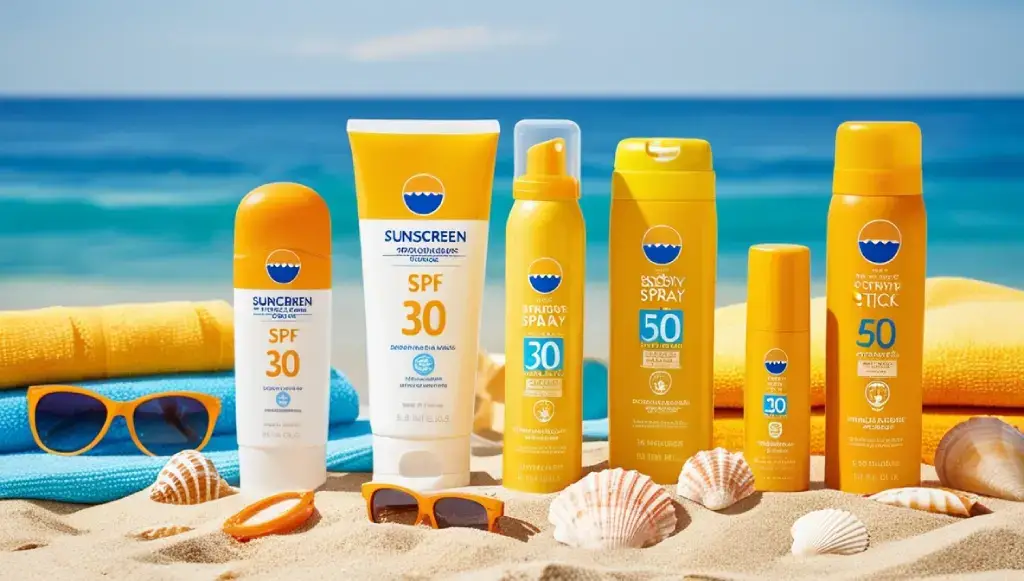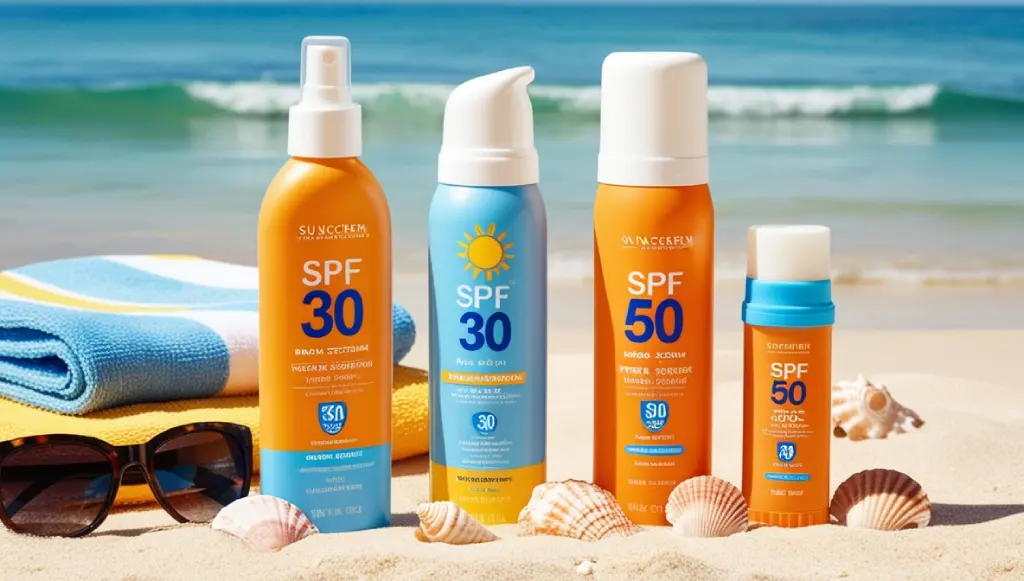Find out how to choose sunscreen for the beach with our expert tips. Learn what to look for and protect your skin on sunny beach days.
Heading to the beach? Nothing beats the feeling of sand between your toes and the warm sun on your skin. But before you lay out your towel and dive into the waves, there’s one essential item you can’t forget — sunscreen.
Picking the right sunscreen for the beach is crucial to protect your skin from harmful UV rays and avoid the pain of sunburn. So, how to choose sunscreen for the beach? This guide has got you covered!
We’ll explore everything you need to know to make the best choice, from SPF levels to water-resistant formulas.
Whether you’re planning a weekend getaway or a long holiday by the shore, you’ll be armed with the knowledge to stay safe under the sun.
Table of Contents
ToggleHow to Choose Sunscreen for the Beach
Choosing the perfect sunscreen for a day at the beach can seem like a simple task, but there are many factors you need to consider.
Here’s how to choose sunscreen for the beach that will keep your skin safe and sunburn-free.
1. Check the SPF Level

When it comes to sun protection, SPF (Sun Protection Factor) is one of the most critical elements to consider. But what does it really mean? SPF measures how well a sunscreen can protect your skin from UVB rays, which cause sunburn. The higher the SPF number, the better the protection. So, how to choose sunscreen for the beach based on SPF?
- SPF 30: Blocks around 97% of UVB rays. Suitable for most beach-goers.
- SPF 50: Blocks approximately 98% of UVB rays. Better for those with fair skin or those who burn easily.
- SPF 15: Blocks around 93% of UVB rays. Generally, not enough for extended sun exposure at the beach.
Opt for a sunscreen with at least SPF 30 for reliable protection, and don’t forget to reapply every two hours or after swimming.
2. Choose Broad-Spectrum Sunscreen
Why is broad-spectrum important when learning how to choose sunscreen for the beach? Because it protects you from both UVA and UVB rays.
UVB rays cause sunburn, while UVA rays can lead to premature skin aging and even skin cancer. A broad-spectrum sunscreen will ensure you’re covered on all fronts.
3. Water-Resistant Formulas
Spending time at the beach usually means you’ll be swimming or sweating. So, when figuring out how to choose sunscreen for the beach, water-resistant formulas are a must.
But remember, “water-resistant” does not mean “waterproof.” No sunscreen is entirely waterproof, and you should reapply every 40 to 80 minutes if you’re in the water.
4. Consider Your Skin Type
Every skin type has unique needs, so how do you choose sunscreen for the beach that’s perfect for you?
- Oily Skin: Opt for a gel-based or oil-free sunscreen that won’t clog pores.
- Dry Skin: Look for sunscreens with hydrating ingredients like glycerin or hyaluronic acid.
- Sensitive Skin: Choose fragrance-free and hypoallergenic sunscreens to avoid irritation.
5. Types of Sunscreen: Chemical vs. Physical
Understanding the different types of sunscreen can help when deciding how to choose sunscreen for the beach.
Chemical Sunscreens
- How It Works: Absorbs UV rays and converts them into heat.
- Pros: Lightweight, easy to apply, no white residue.
- Cons: May cause irritation for sensitive skin types.
Physical Sunscreens
- How It Works: Sits on top of the skin and reflects UV rays.
- Pros: Immediate protection, better for sensitive skin.
- Cons: Can leave a white cast on the skin.
6. Look for Additional Skin Benefits
Want to know how to choose sunscreen for the beach that goes the extra mile? Some sunscreens include ingredients that provide additional benefits, like antioxidants to fight free radicals, or vitamins C and E to promote skin health.
7. Reef-Safe Options
If you care about the environment, learning how to choose sunscreen for the beach involves opting for a reef-safe product.
Some chemical sunscreens contain ingredients like oxybenzone and octinoxate that harm coral reefs. Check the label for “reef-safe” or “reef-friendly” formulas.
8. Application Type
When it comes to how to choose sunscreen for the beach, you have various options — from lotions to sprays and sticks. Each has its pros and cons:
- Lotions: Offer more thorough coverage but can take longer to apply.
- Sprays: Convenient for quick applications, but be cautious of missed spots.
- Sticks: Ideal for sensitive areas like the face, but may be harder to spread evenly.
9. Check the Expiry Date
Yes, sunscreen can expire! Knowing how to choose sunscreen for the beach means you should always check the expiry date. Using expired sunscreen may leave your skin unprotected, so make sure it’s fresh.
Conclusion
Now you know how to choose sunscreen for the beach! Picking the right sunscreen isn’t just about SPF; it’s about understanding your skin, knowing how active you’ll be, and even considering the environment.
So, next time you pack for a sunny day at the shore, make sure you’ve got the perfect sunscreen in your bag. Happy sunbathing!
For more tips and information, visit traveloasisspot.com to stay informed and prepared for your beach adventures.
FAQs
Q: What sunscreen to use for a beach?
A: For beach activities, choose a sunscreen that offers broad-spectrum protection (UVA and UVB), is water-resistant, and has at least SPF 30 or higher. You can opt for either mineral-based or chemical-based sunscreens depending on your preference, but be sure to reapply it every 2 hours, especially after swimming or sweating.
Q: Is SPF 30 or 50 good for the beach?
A: SPF 30 or 50 is a good choice for the beach. SPF 30 blocks about 97% of UVB rays, while SPF 50 blocks around 98%. The difference is minimal, but SPF 50 offers slightly more protection. The key is to apply it evenly and reapply every 2 hours.
Q: How much SPF is needed for the beach?
A: The minimum recommended SPF for the beach is SPF 30, as it provides adequate protection from intense UVB exposure. However, if you have sensitive skin or plan to be in the sun for a long period, consider using SPF 50 or higher.
Q: Is SPF 100 good for the beach?
A: SPF 100 provides higher protection than SPF 30 or 50, but it doesn’t mean it’s twice as strong. SPF 100 blocks about 99% of UVB rays. It can be a good option for those who are very sensitive to the sun, but proper application and regular reapplication are still essential for maximum protection.
















